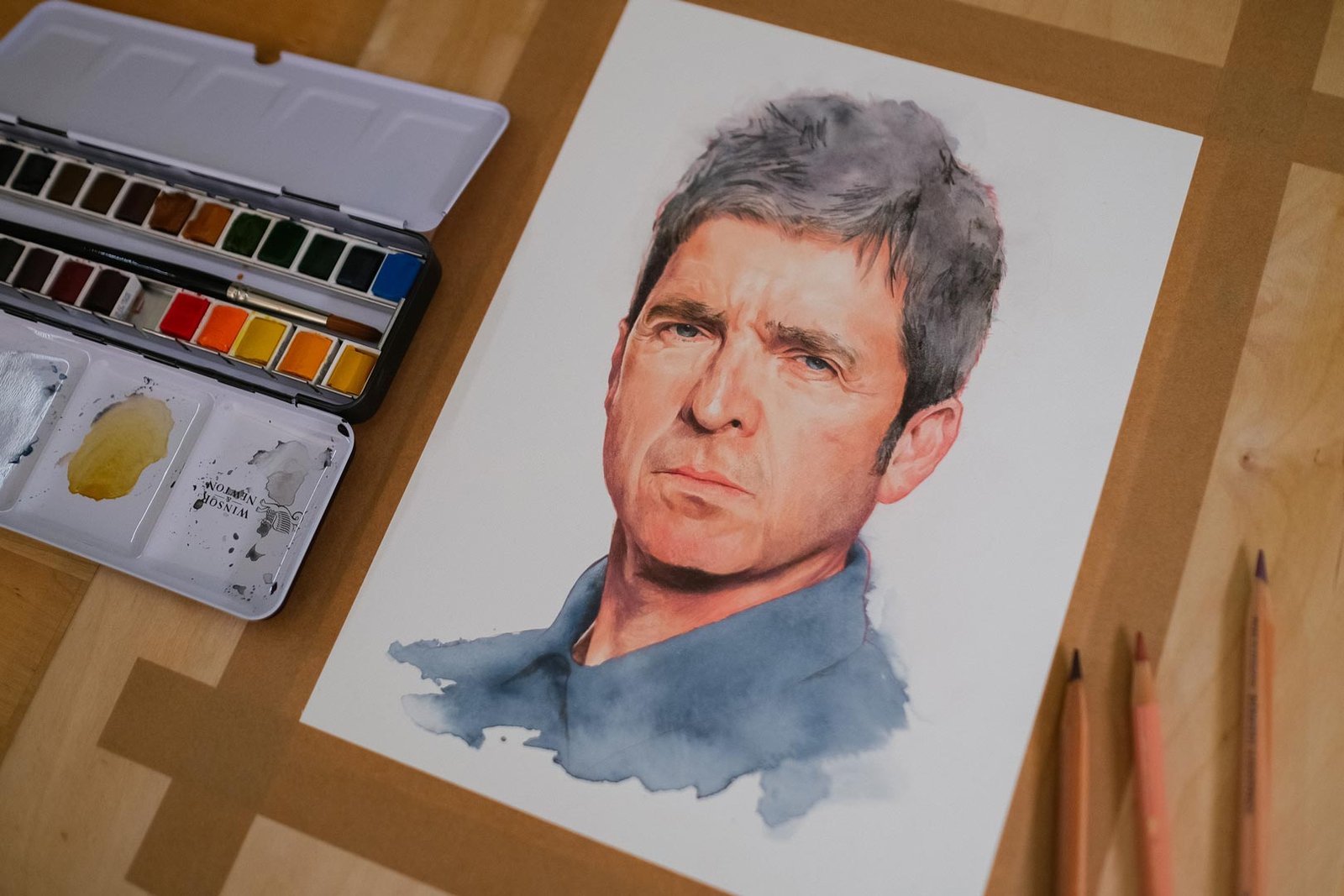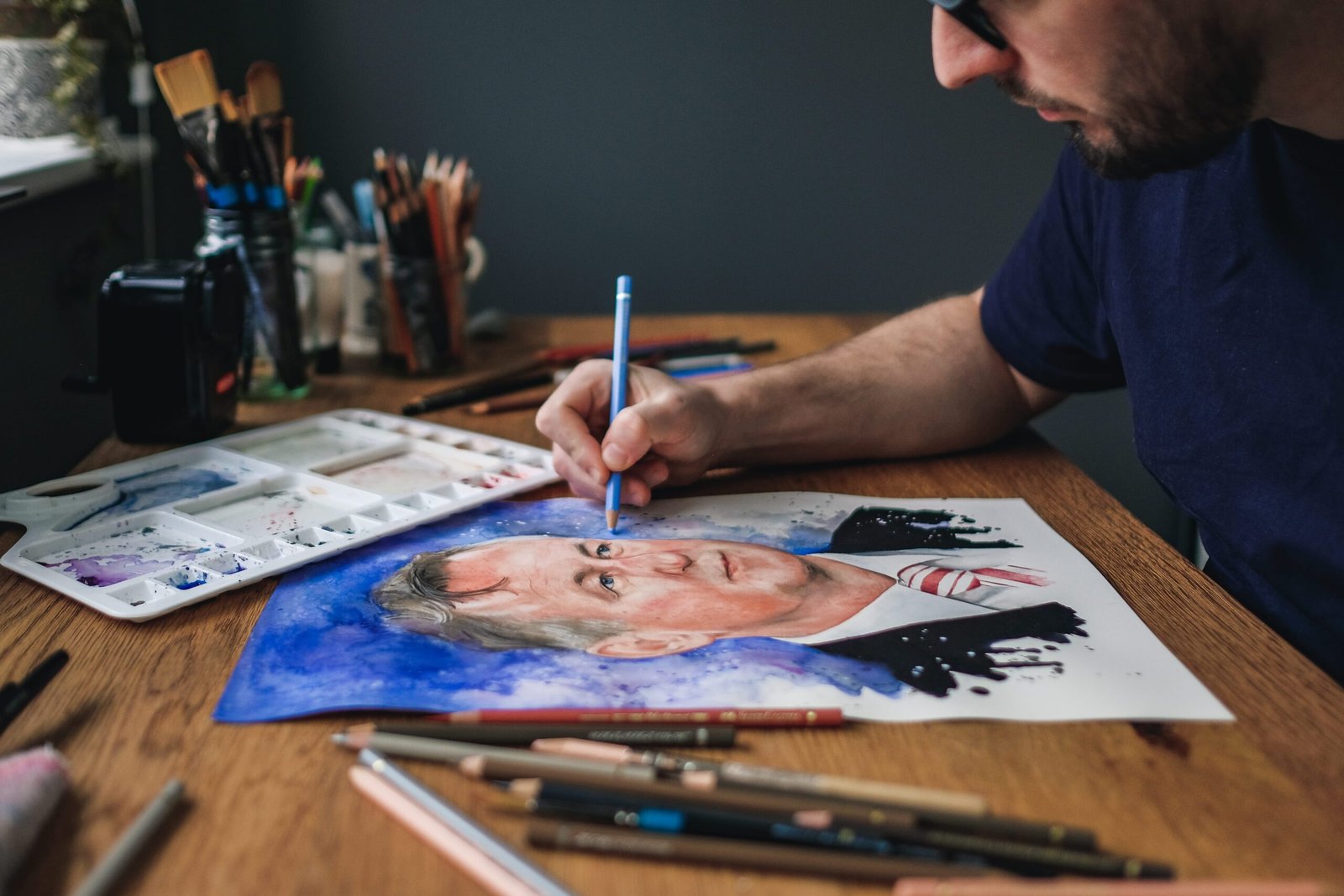Harry Kane Portrait

Digital Painting
Harry Kane Portrait
If you read my last post you will have seen I’ve spent the start of 2025 drawing lots of heads in Procreate in preparation for some digital painting, something I’ve been hoping to improve for a long time. Not only that, I wanted to replicate my style of watercolour and pencil portraiture so I’ve been experimenting with a lot of brush packs from the likes of Lisa Glanz, Adilson Farias, Max Ulichney and Lisa Bardot.
Below are images at various stages of the portrait, I approached the painting the same way I would if I was working traditionally. Starting with a watercolour wash over the pencil drawing before later adding the details. Overall I’m quite pleased with the results and I’m planning on finishing a few of the other sketches I recently created.

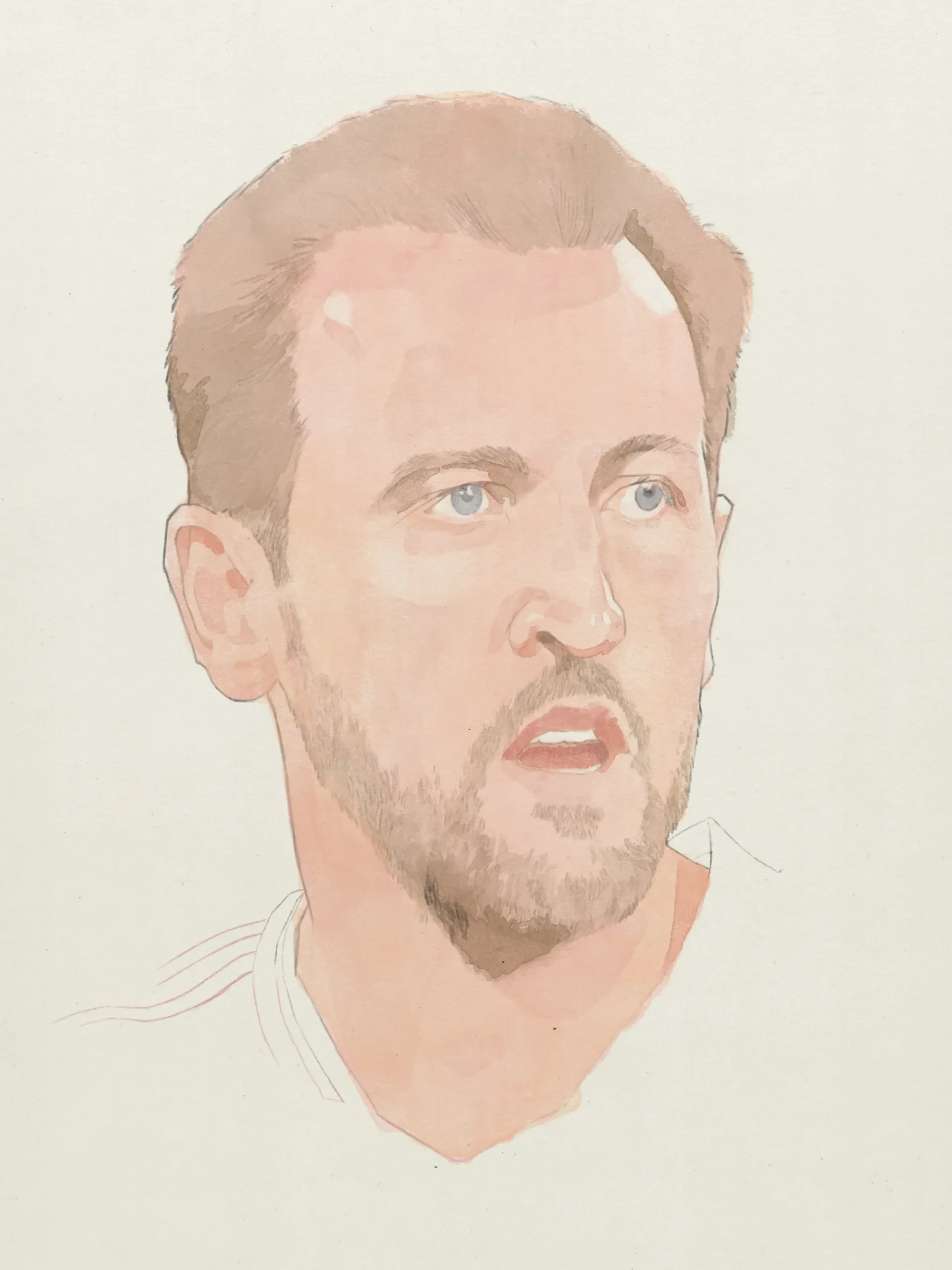
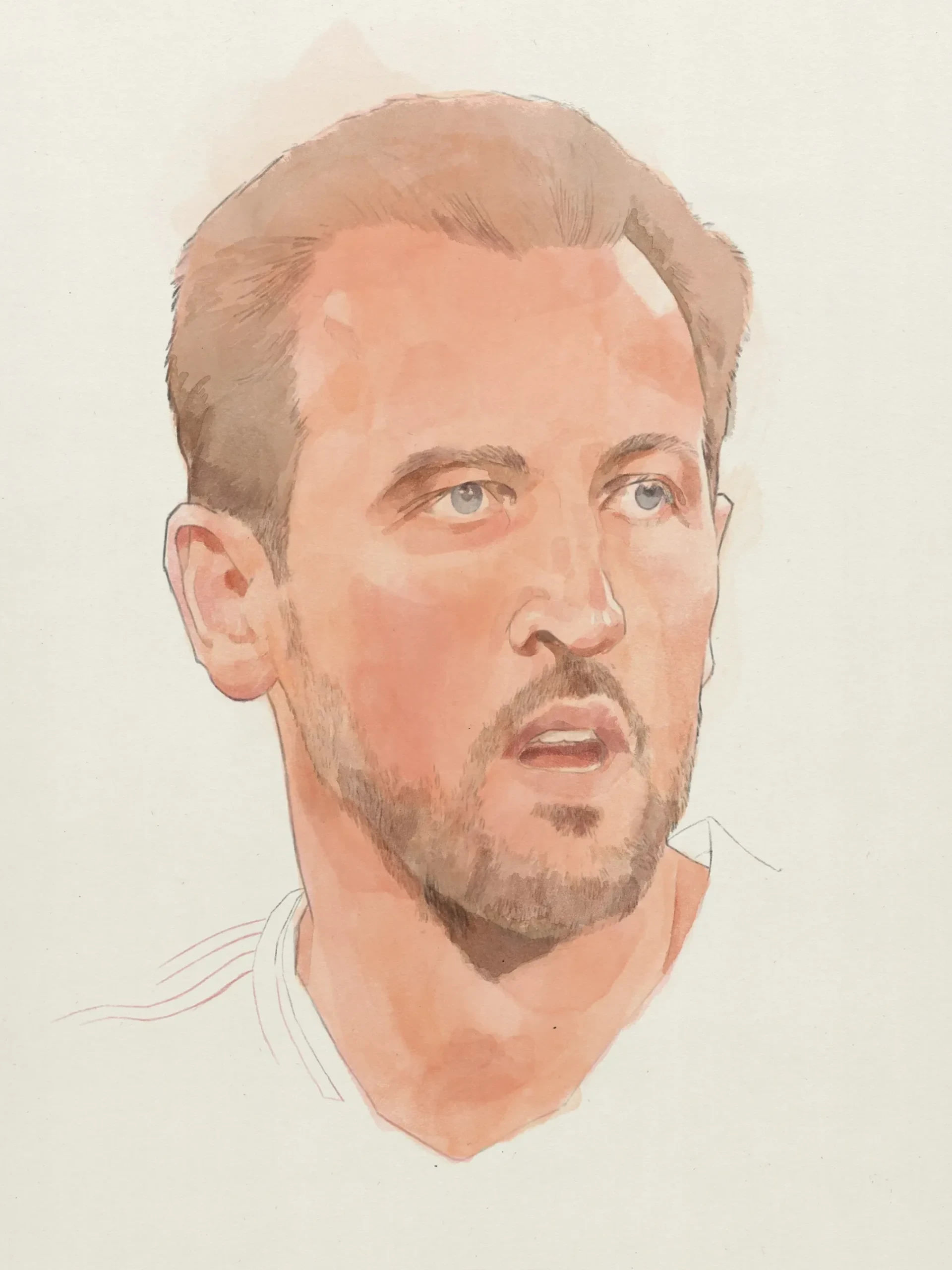



February 2025 Sketch Dump
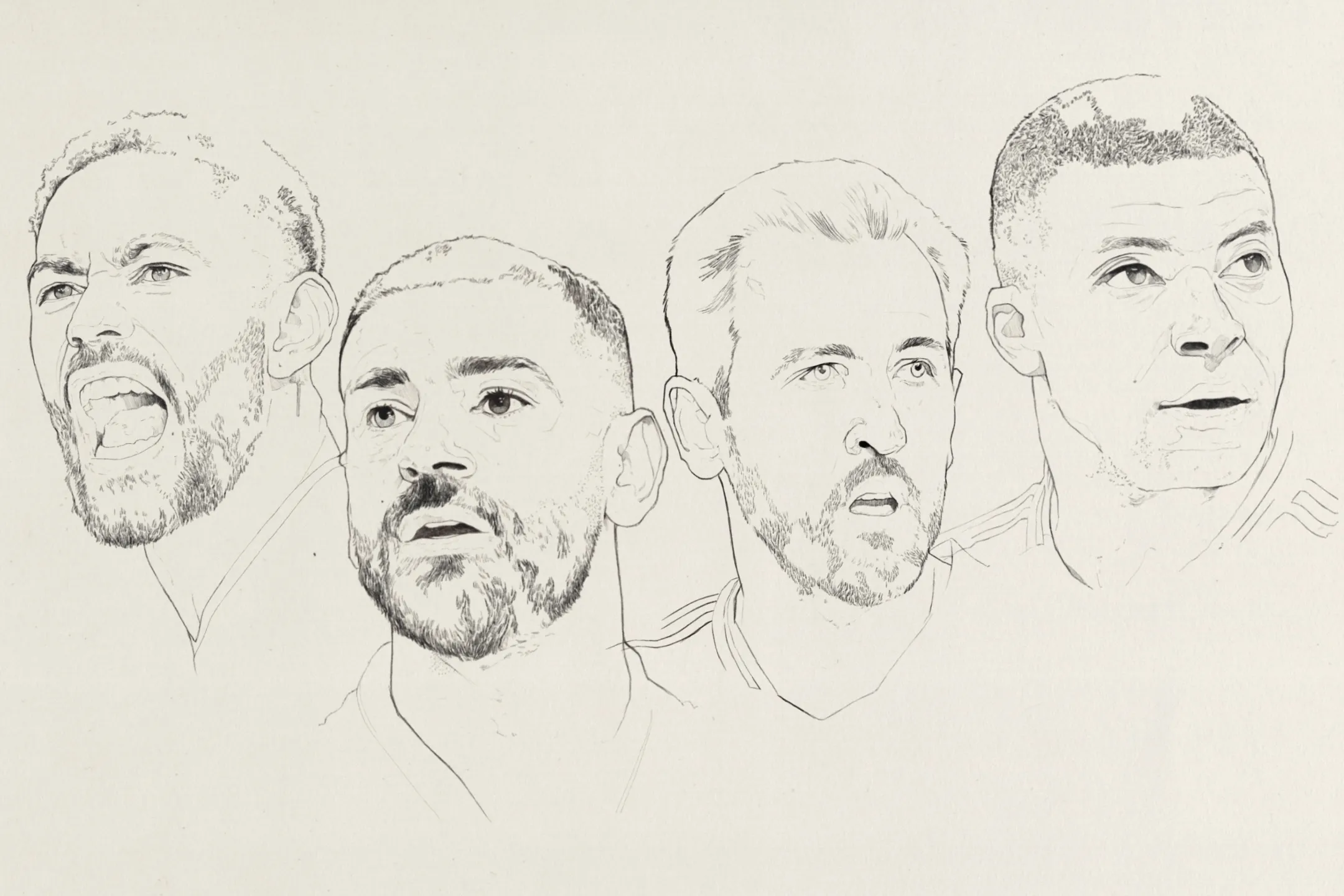
Sketchbook
February 2025 Sketch Dump
2025 is racing along so I thought I’d best post an update as we hit March. January and February have been cold and dark and the last thing I’ve wanted to do is paint at night. Instead I’ve been hitting the sofa at the end of a long day, turning the TV on (anyone else watching Severance?) and falling back in love with drawing in Procreate. Below, is a collection of sketches I’ve created. If you’re familiar with football I hope you can identify who’s who.
I’ve also found a pencil brush I feel comfortable using and the results it produces mimic how I would draw traditionally. It’s from the The Greasy Pencil Set for Procreate by wwowly and best of all, it’s FREE!
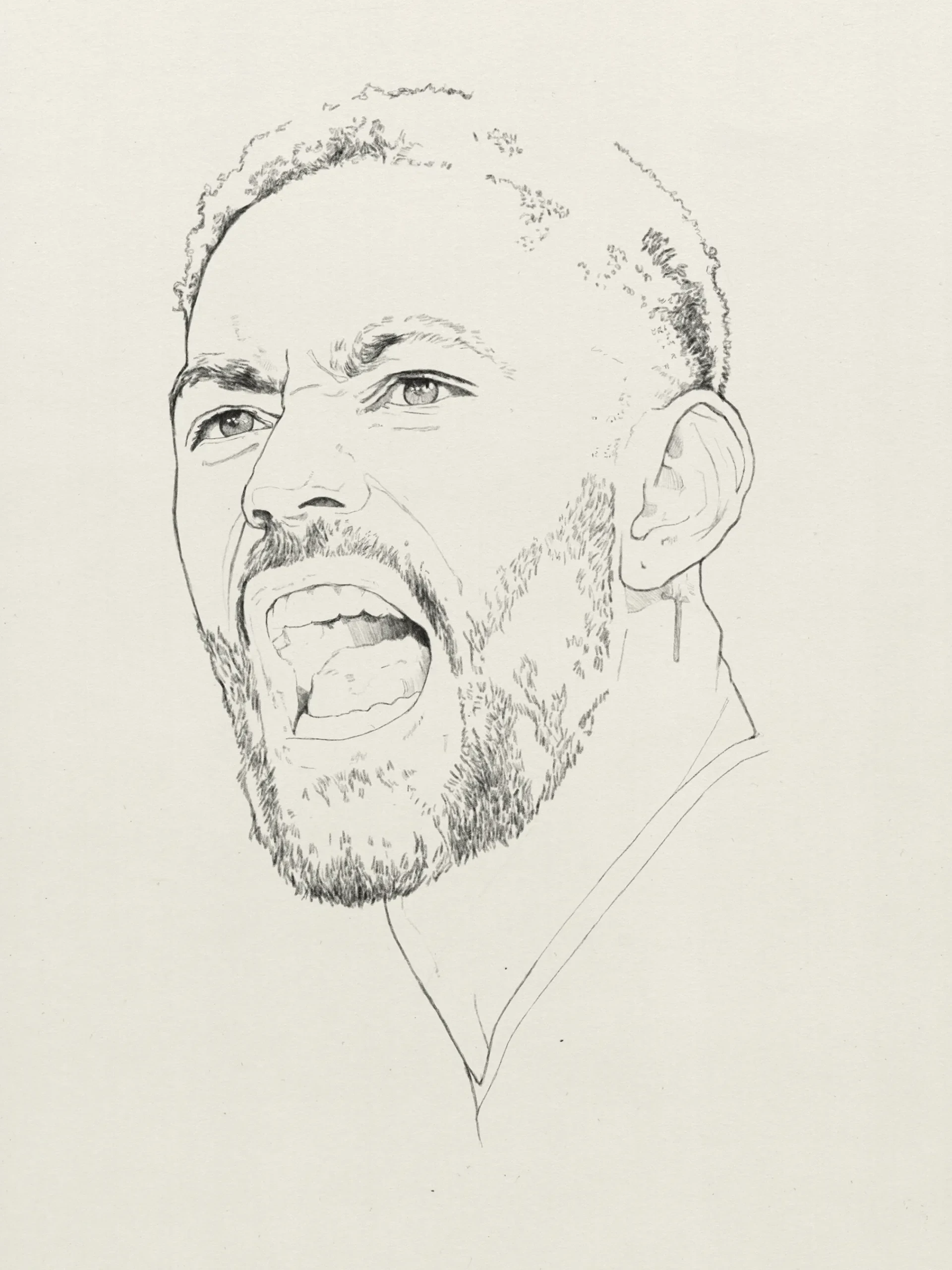
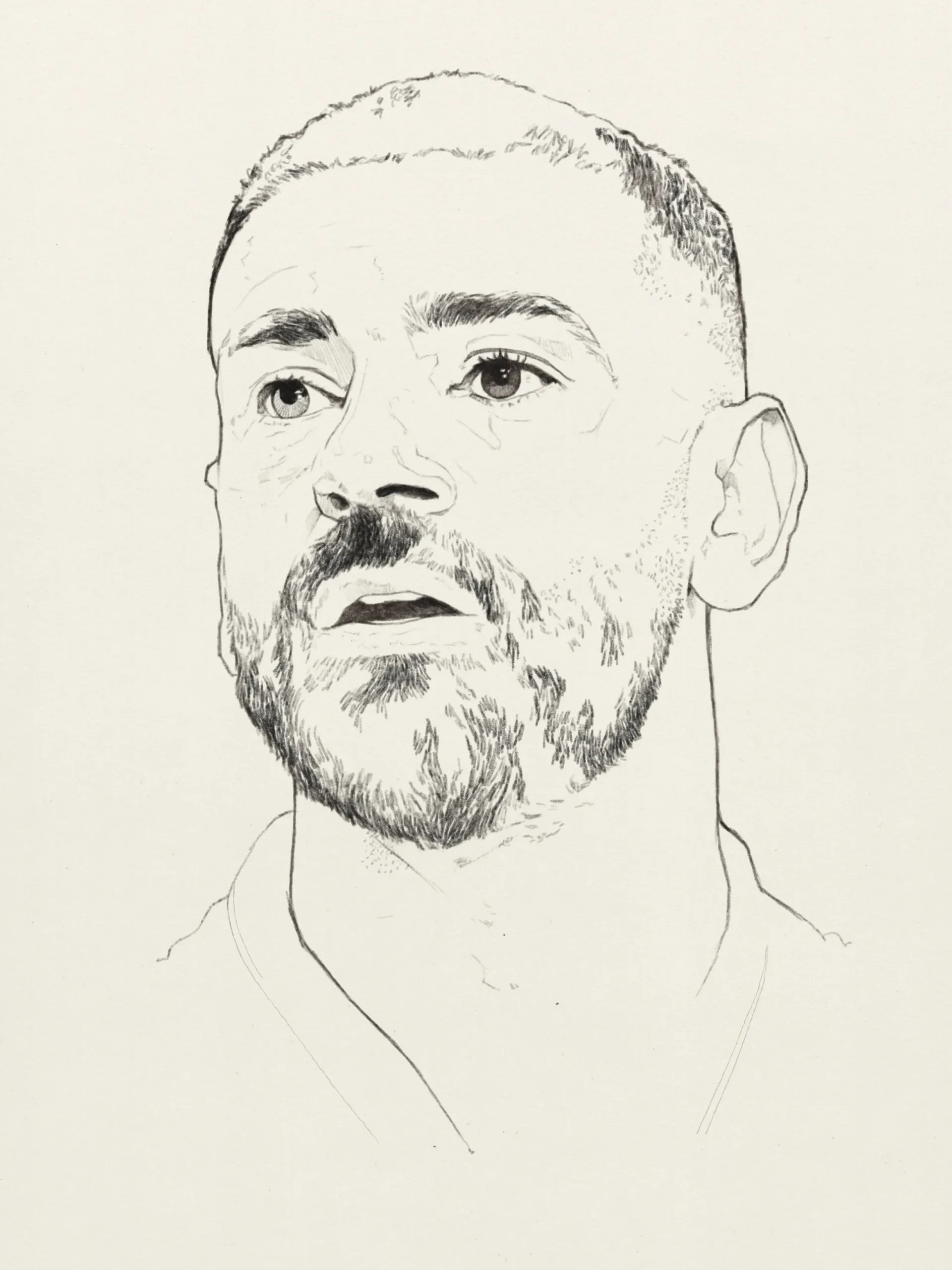

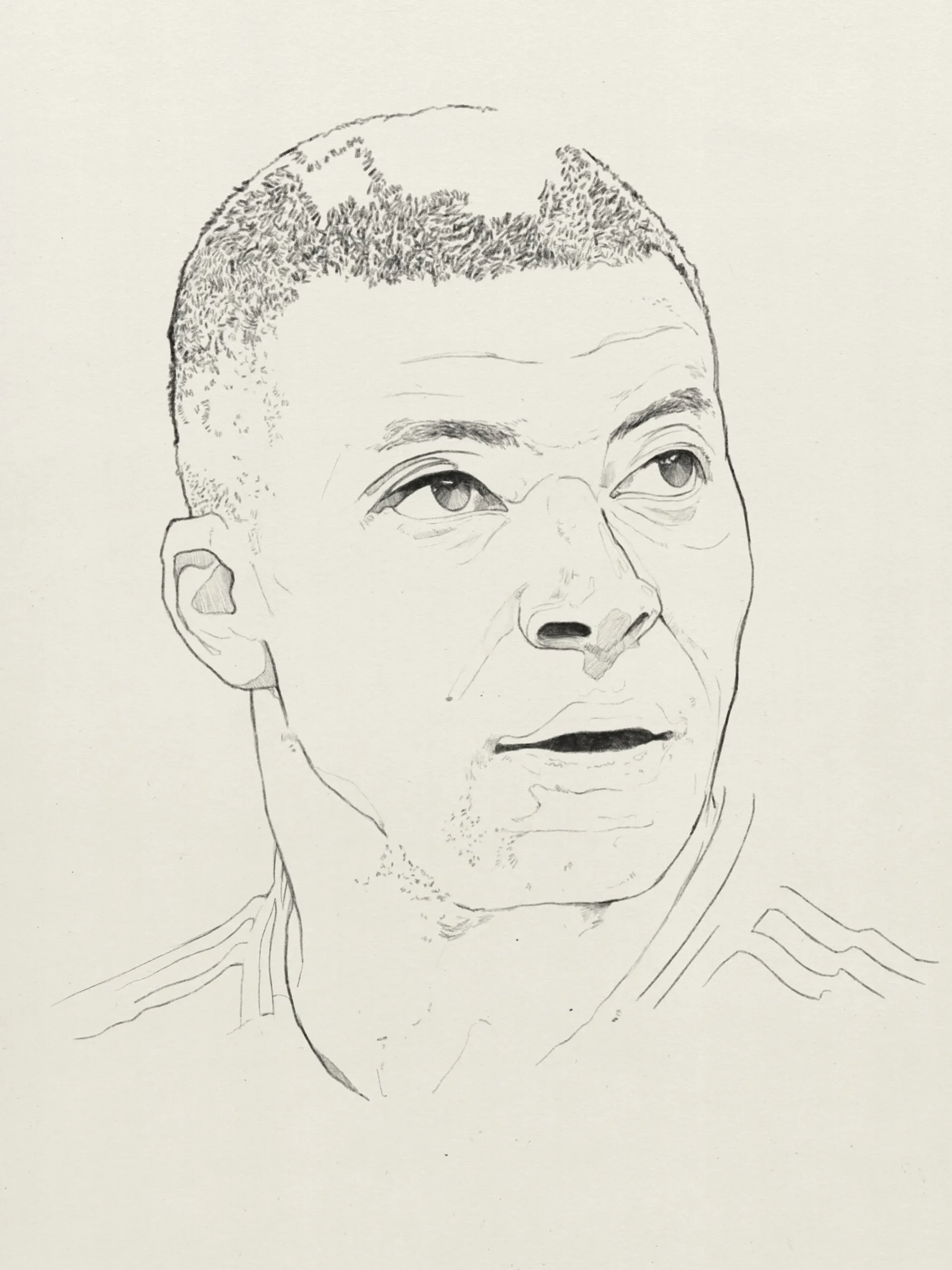
I’m very keen to replicate my watercolour and pencil drawings using digital techniques and I’ve spent a number of hours experimenting with watercolour brush sets, more of which I’ll share in a future post. It’s always daunting sketching on a bright white screen, so to tackle that and to get closer to the traditional look I scanned my Arches Hot Pressed watercolour paper which adds a subtle texture and an off white colour, adding warmth to the drawing.
You’ll notice they all have an unfinished look to them and this is because I would get to around this point in the drawing stage and be happy that the portrait has got a likeness and that I’m ready to start painting, this time digitally. However, there are occasions where I will lose interest and the buzz of excitement in a piece. To try and combat this, l have multiple sketches on the go so I don’t get bored of looking at the same image for too long.
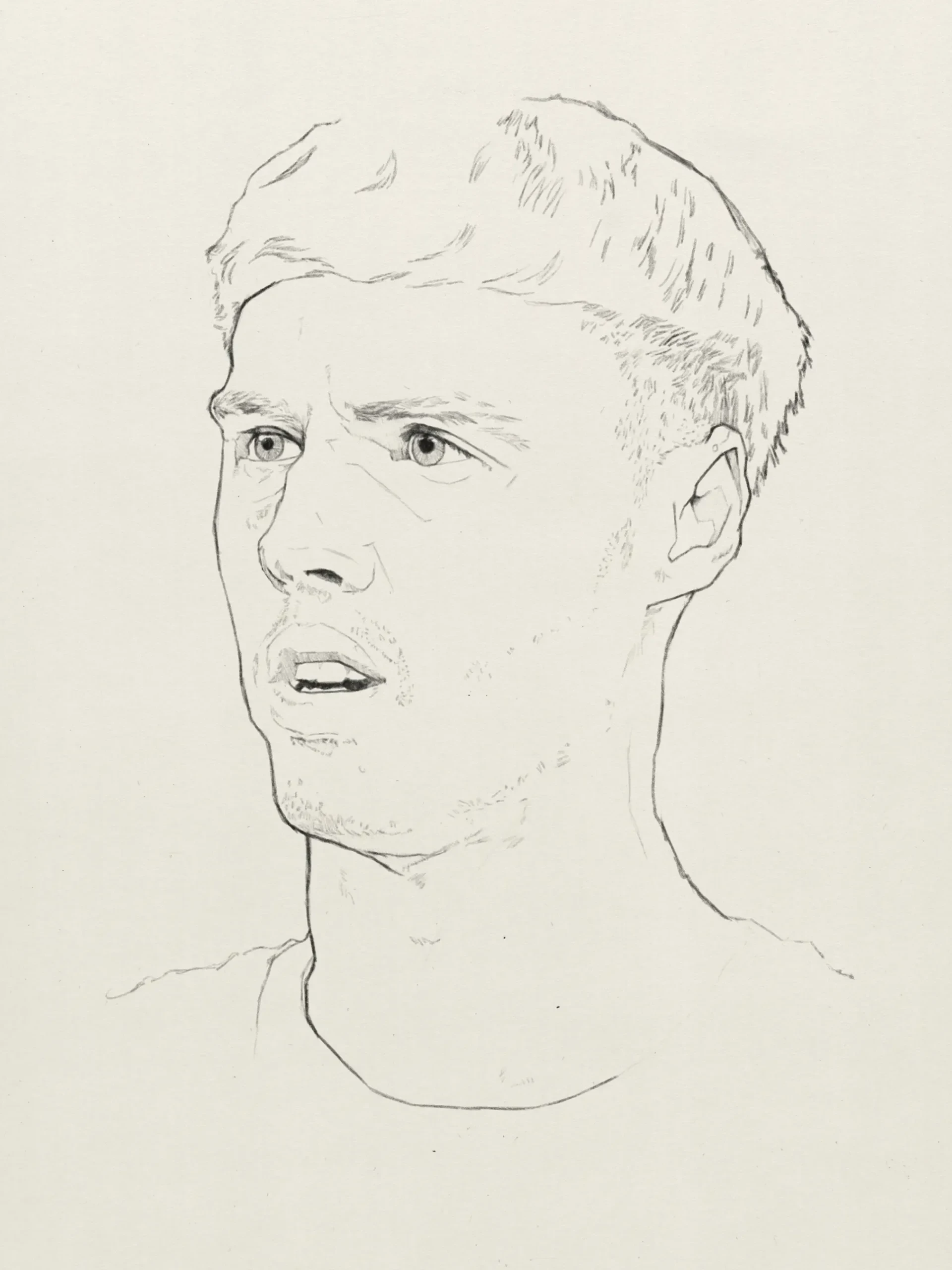
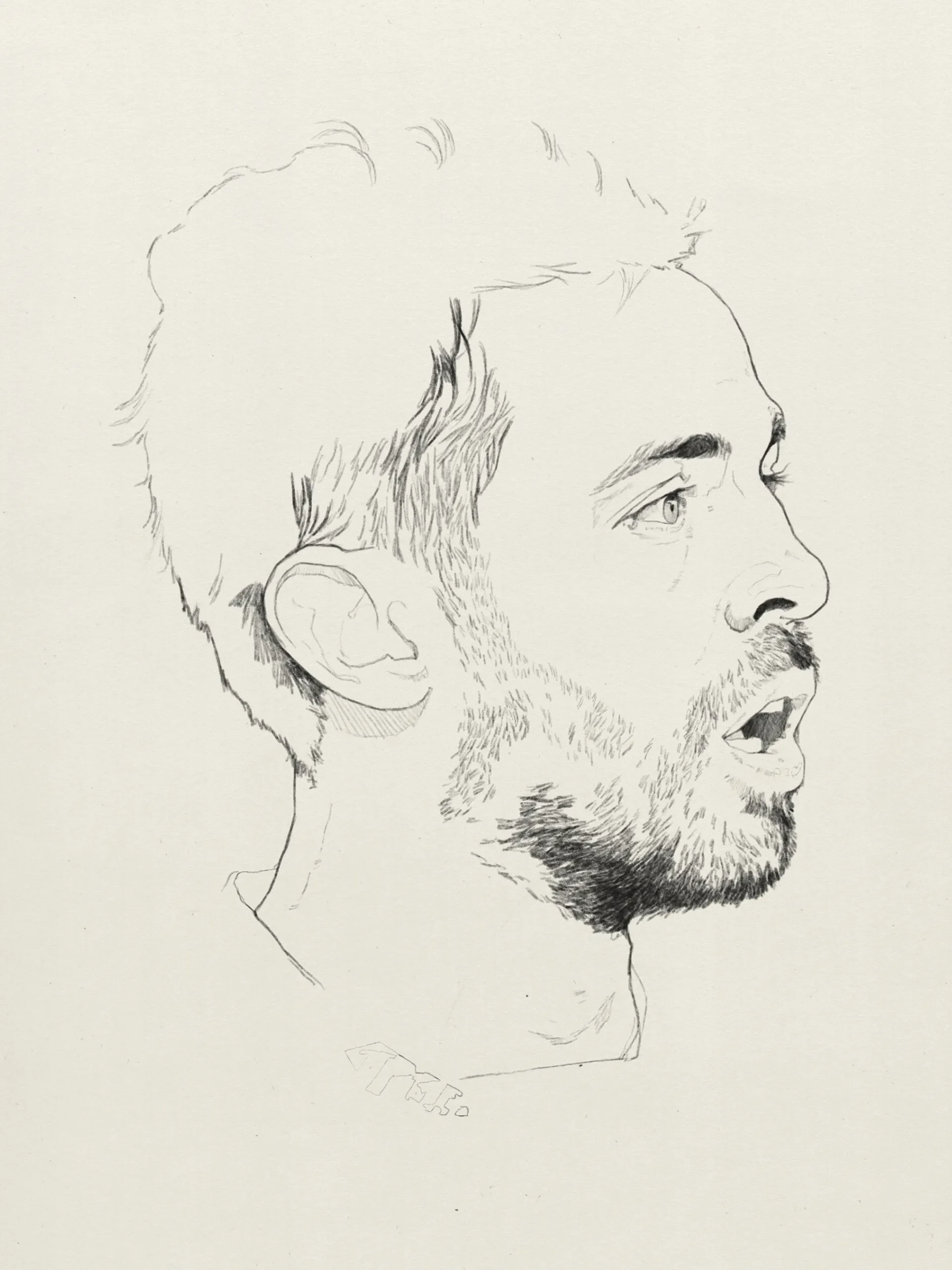


Watercolour and Pencil Portrait of Noel Gallagher
Paul Clay
Having recently painted a Liam Gallagher portrait it was time to paint one of Noel, the man behind some of the most iconic Britpop anthems of the 1990s. Rendered using a combination of watercolour and coloured pencils, the artwork brings to life Gallagher. Using watercolours as the base adds a softness to Gallagher’s otherwise sharp and defined persona. Watercolour, with its translucent quality, allows for the subtle blending of light and shadow, evident in the gentle tones that highlight his cheekbones and forehead. Yet, it doesn’t wash away the intensity of his expression. The use of coloured pencils brings back the sharper details that define his stoic gaze and furrowed brow, emphasizing his well-known “no-nonsense” attitude.


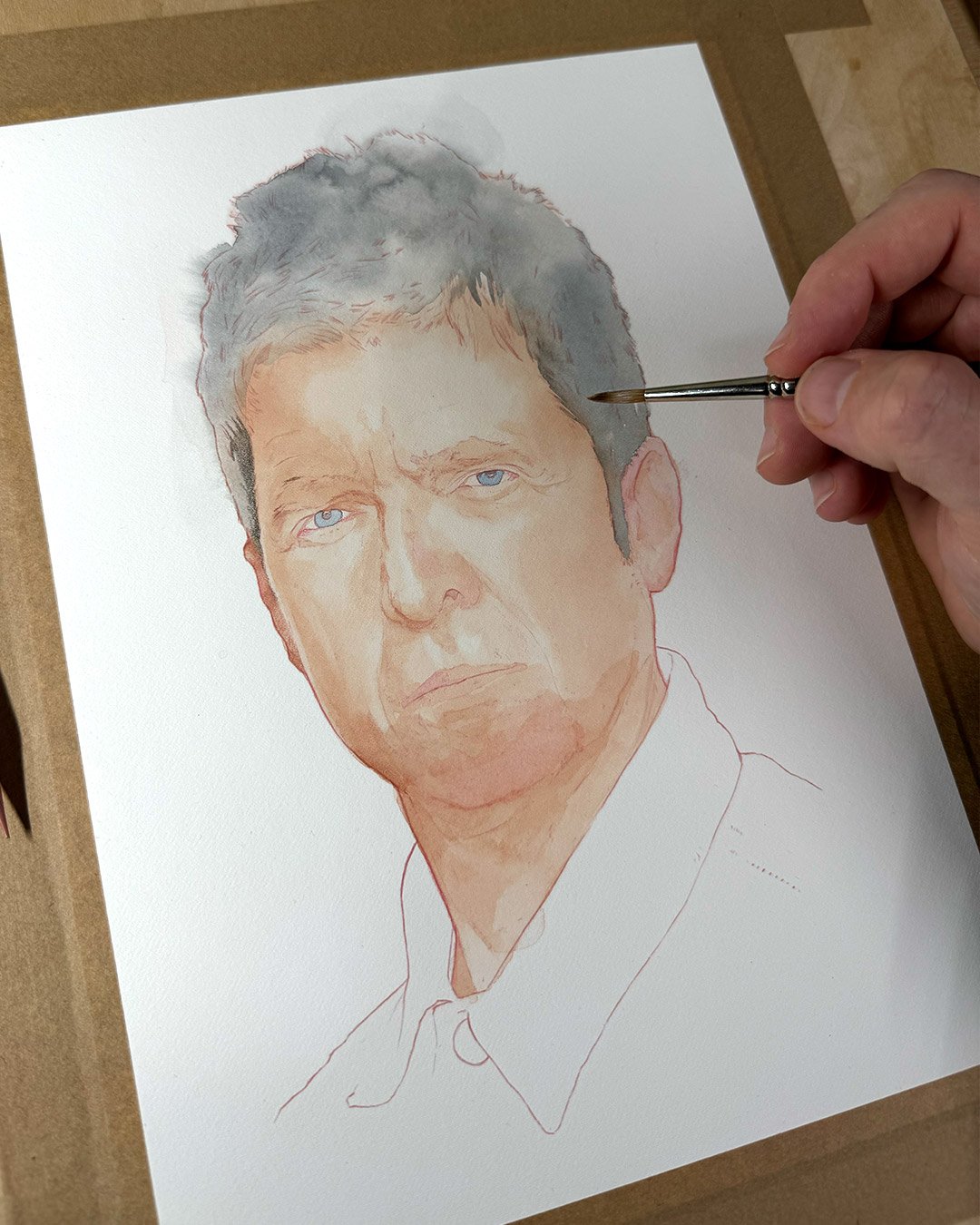

The contrast between the smooth washes of watercolour and the precision of the pencil strokes mirrors Gallagher’s musical duality — the ability to craft both sweeping anthems and more intimate, detailed ballads. I like to think the layering technique reflects the many layers to Gallagher’s public persona, from the loud, brash rock star to the thoughtful songwriter. The colour palette is muted, with soft greys, blues, and browns dominating the image creating ann almost classic look, avoiding any flashy or vibrant tones.
A favourite part of the process is when I start to refine the portrait, using coloured pencils to introduce details around key features of the face.
Tools — Faber-Castell Polychromos & Derwent Lightfast pencils
The incomplete, almost water-washed edges of the portrait create an interesting contrast with the finely detailed face. This unfinished element is something I want to explore further as I aim to loosen up my style. To see a time lapse reel of how this artwork came together you can see this post on my Instagram.
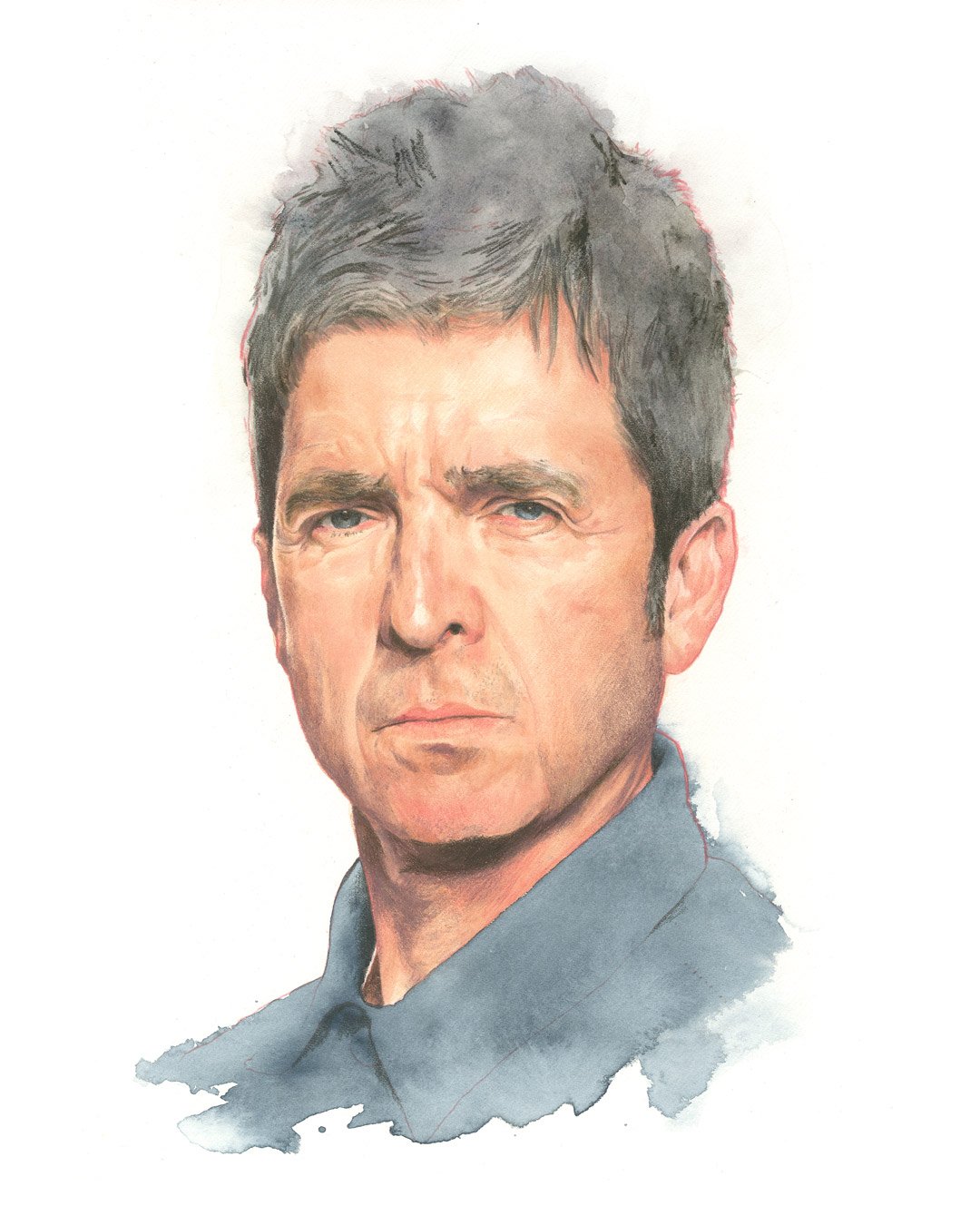
As You Were - A Liam Gallagher Portrait
Paul Clay
I’ve been watching a lot of artists on YouTube recently who have convinced me to purchase some watercolour paper that I have never used before, the Fabriano Artistico watercolour paper Hot Pressed. I’ve been a longtime user of Arches Hot Pressed watercolour paper which is more ivory in colour. It’s an excellent paper especially when I add coloured pencil on top of my watercolour paintings but I’ve been looking for something closer to white for a long time. So after watching numerous videos I treated myself to a block from Jackson’s Art.
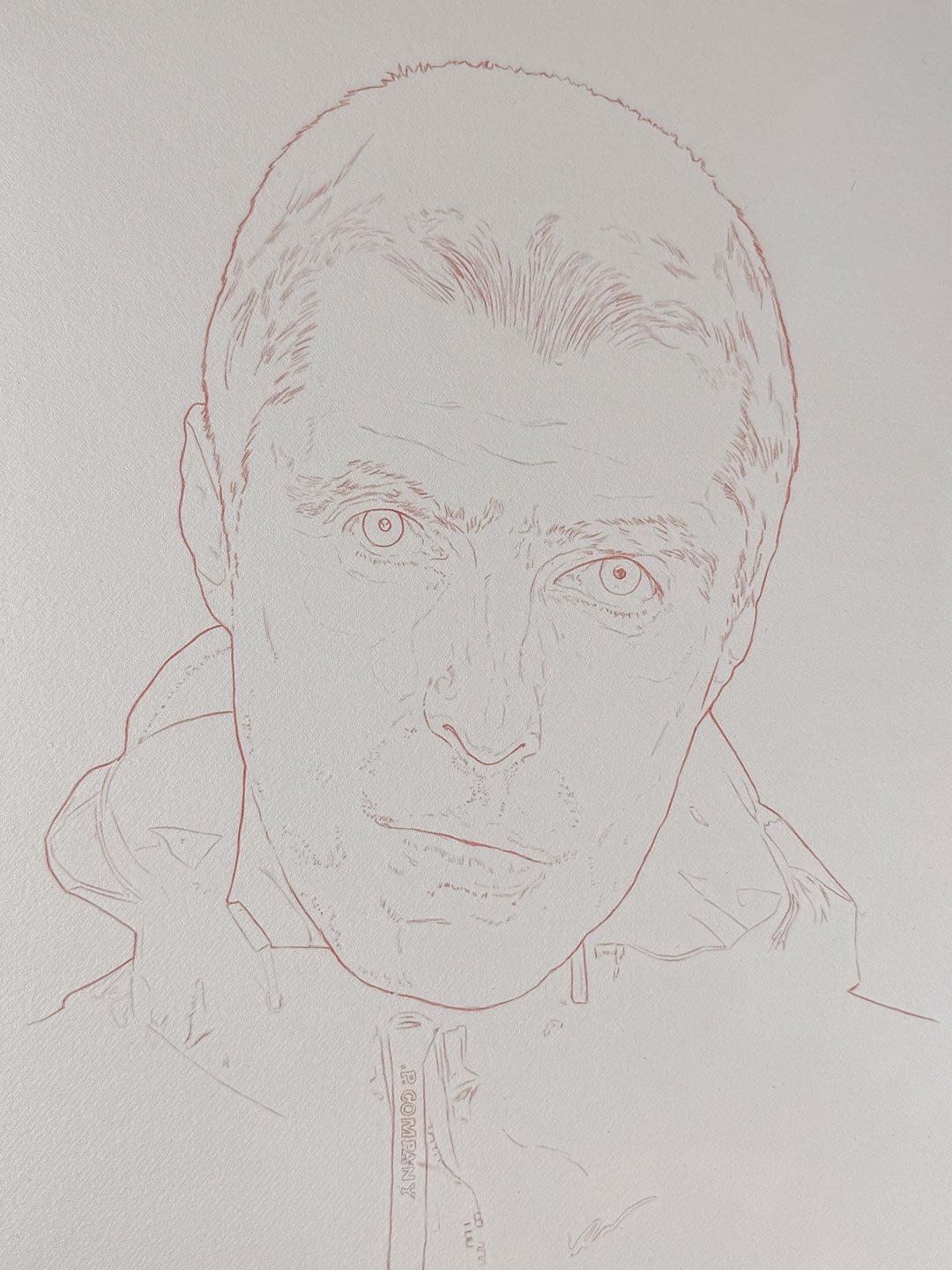
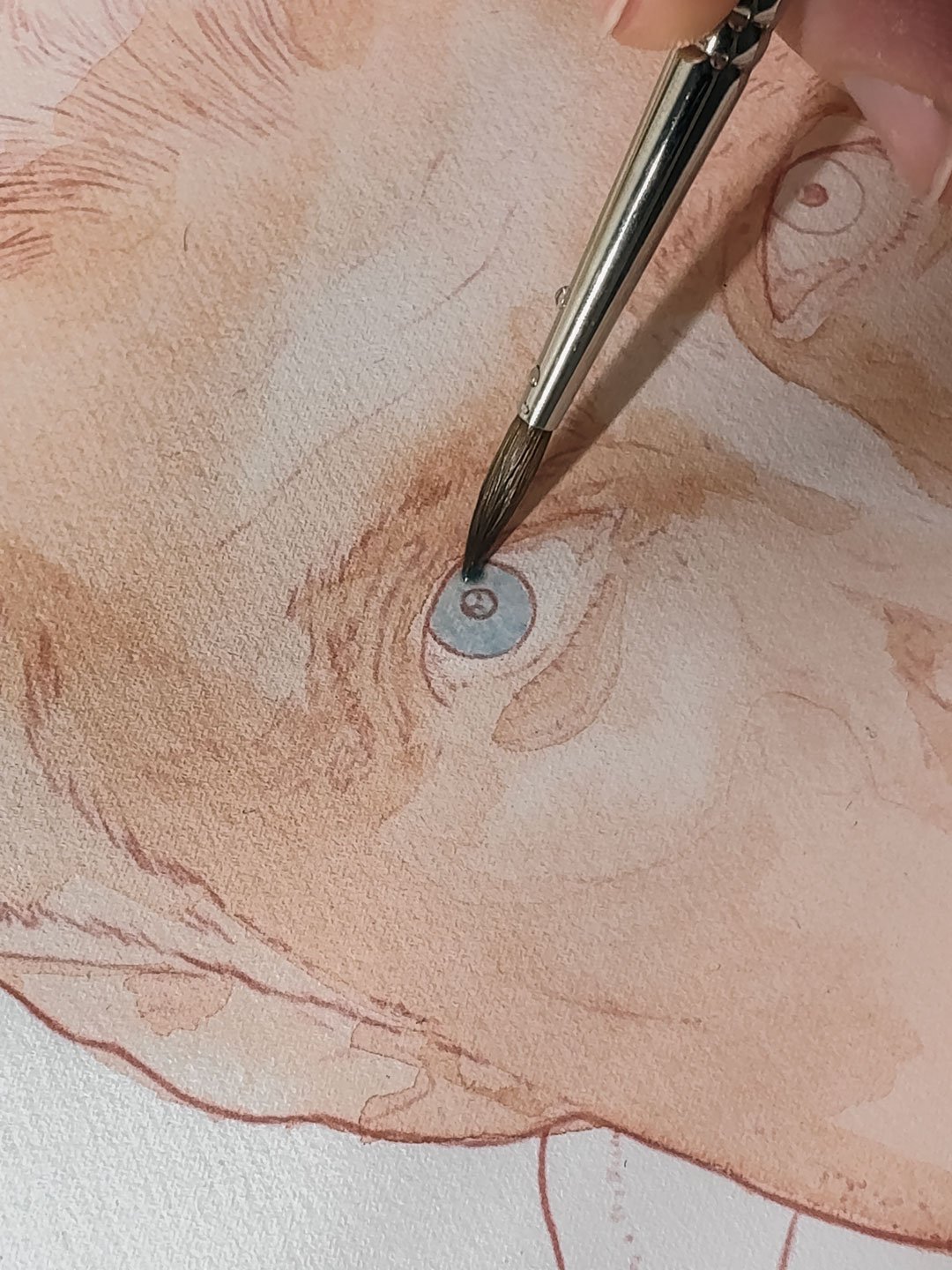
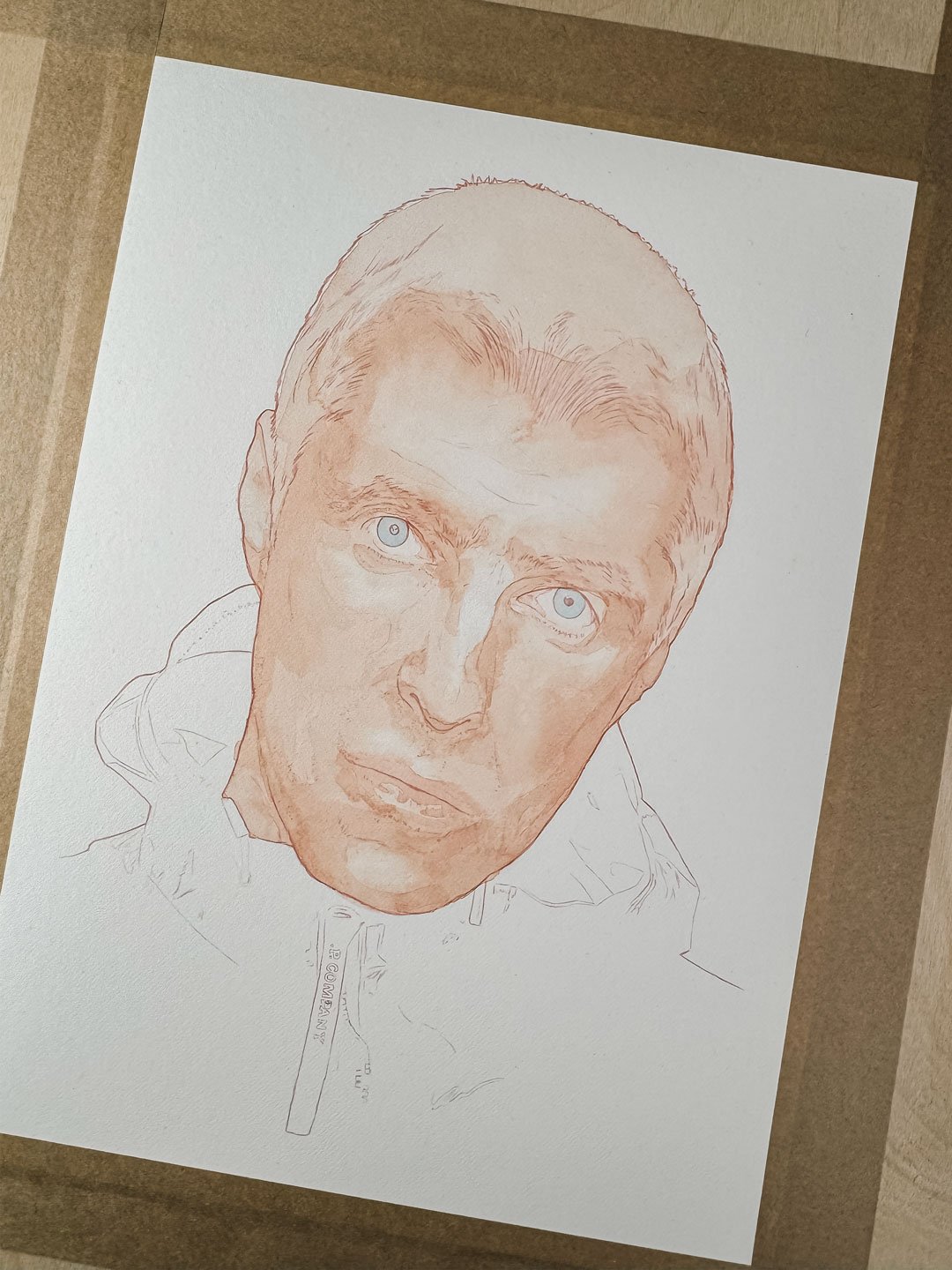
A few days after the paper arrived, Oasis announced their reunion and plans to perform in 2025. Perfect, why not have a crack at painting Liam Gallagher on the new paper (not before wasting hours in an online queue and ending up with no tickets, but the less said about that the better).
I’d also recently picked up the Winsor & Newton Artists’ Professional Water Colour Lightweight Metal Box 24 Half Pan Set from eBay for a really good price so I was looking forward to using them. Coupled with some new Derwent Lightfast pencils I had for my birthday I was excited to get started.
After I was happy with the outlines and drawing of the portrait I transferred it to the paper and got started with the watercolour washes. As ever, the paint is really nice to work with and a little goes a long way as it is so heavily pigmented.
A favourite part of the process is when I start to refine the portrait, using coloured pencils to introduce details around key features of the face.
Tools — Faber-Castell Polychromos & Derwent Lightfast pencils
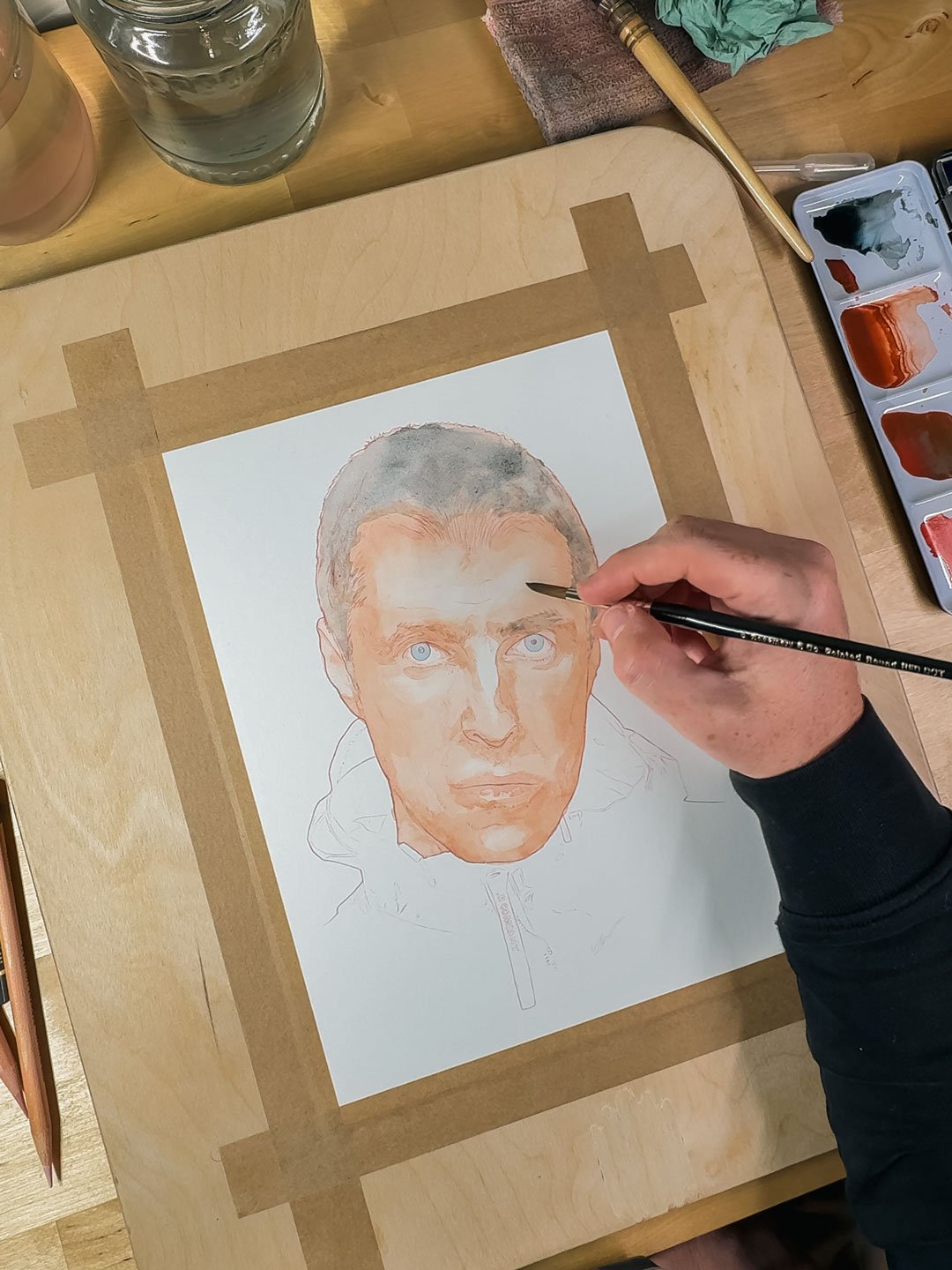
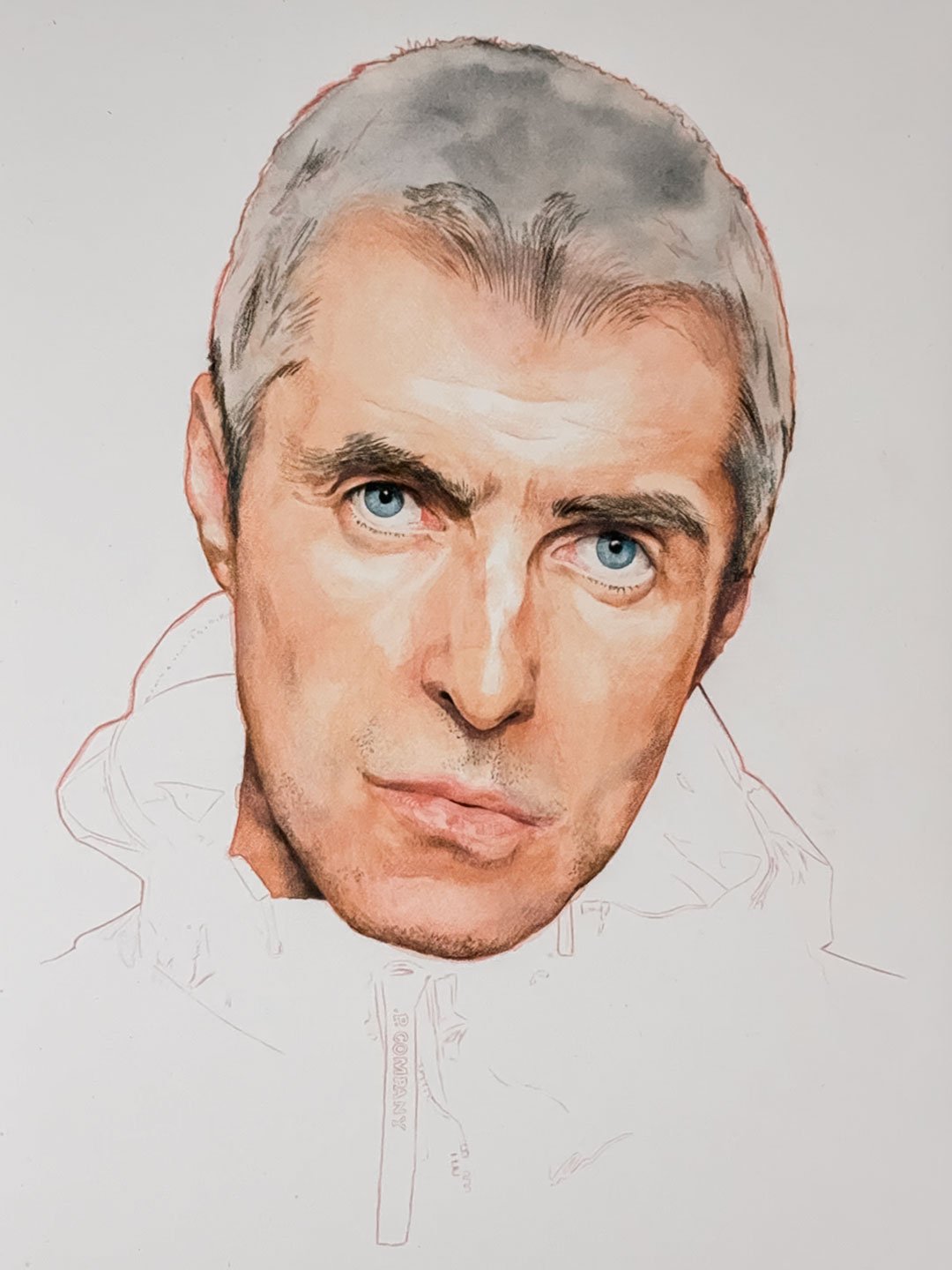
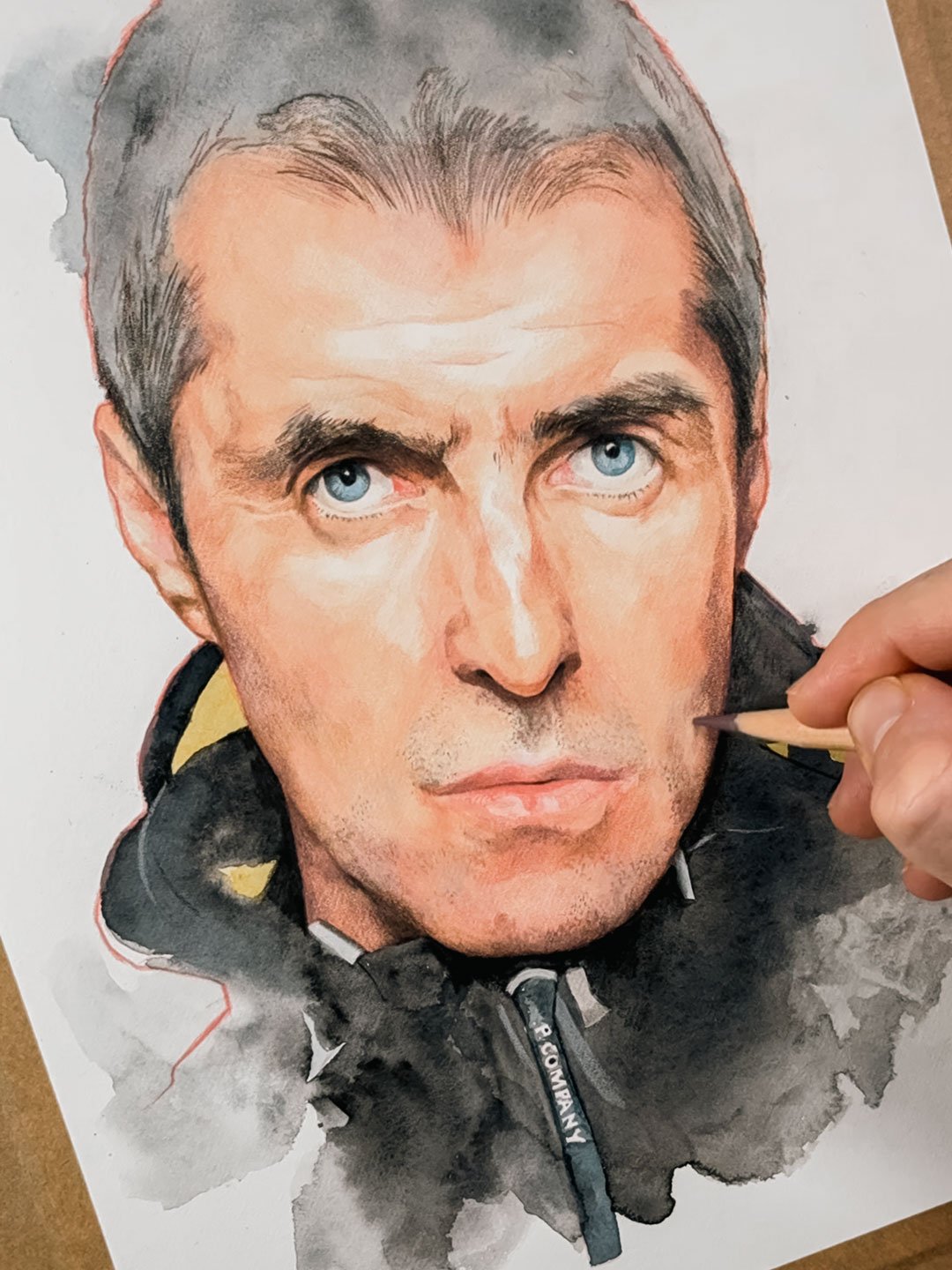
Trust the process.
As a portrait artist there are lots of occasions where you question what you are making and you’re constantly asking yourself ‘Have I got a likeness?’. It’s not a quick process and it’s that moment where the face starts to jump off the paper that you can start to relax a little and enjoy the flow. It’s taken a number of years but it’s all part of the journey.
If you’d like to see a video of this portrait process you can watch this Reel on my Instagram feed. Don’t forget to drop a Like or a Comment, it would be greatly appreciated.
Discovering the Derwent Pencil Museum
Paul Clay
Nestled in the heart of the Lake District, the charming town of Keswick is home to one of the most unique and unexpectedly delightful attractions for art lovers and curious minds alike—the Derwent Pencil Museum. As someone who appreciates the timeless beauty of pencil drawing, I couldn’t resist the chance to visit this hidden gem and learn more about the humble tool that has shaped so much of art and history.
Entering the museum you quickly dive into the fascinating history of pencil-making. Derwent, a name synonymous with high-quality art supplies, has been producing pencils since 1832, and the museum beautifully traces the history of this iconic British brand. It’s incredible to learn that Keswick was at the heart of pencil-making due to the discovery of graphite in the area back in the 16th century. This led to the development of the first-ever pencils in the world!
The World’s Largest Pencil!
One of the museum’s most memorable attractions is the world’s largest pencil, a true marvel that stands over 26 feet tall! It was created by Derwent in celebration of their anniversary and holds the Guinness World Record for its size. Standing next to it makes you feel like you’ve been transported into a whimsical world where pencils are larger than life!



A Journey Through Time
Inside the museum, you’re taken on a journey through the evolution of the pencil, from the early days when graphite was wrapped in sheepskin to the modern pencils we use today. There are old machines, historical artifacts, and intriguing exhibits, including the secret pencils used by British spies during World War II, which had hidden compartments for maps and messages! It’s one of those places where you realise just how much history and innovation can be packed into something as simple as a pencil.
These pencils were given to Lancaster Bomber airman in WWII, and were made in secrecy under the official secrets act.
The Secret Map & Compass Pencil
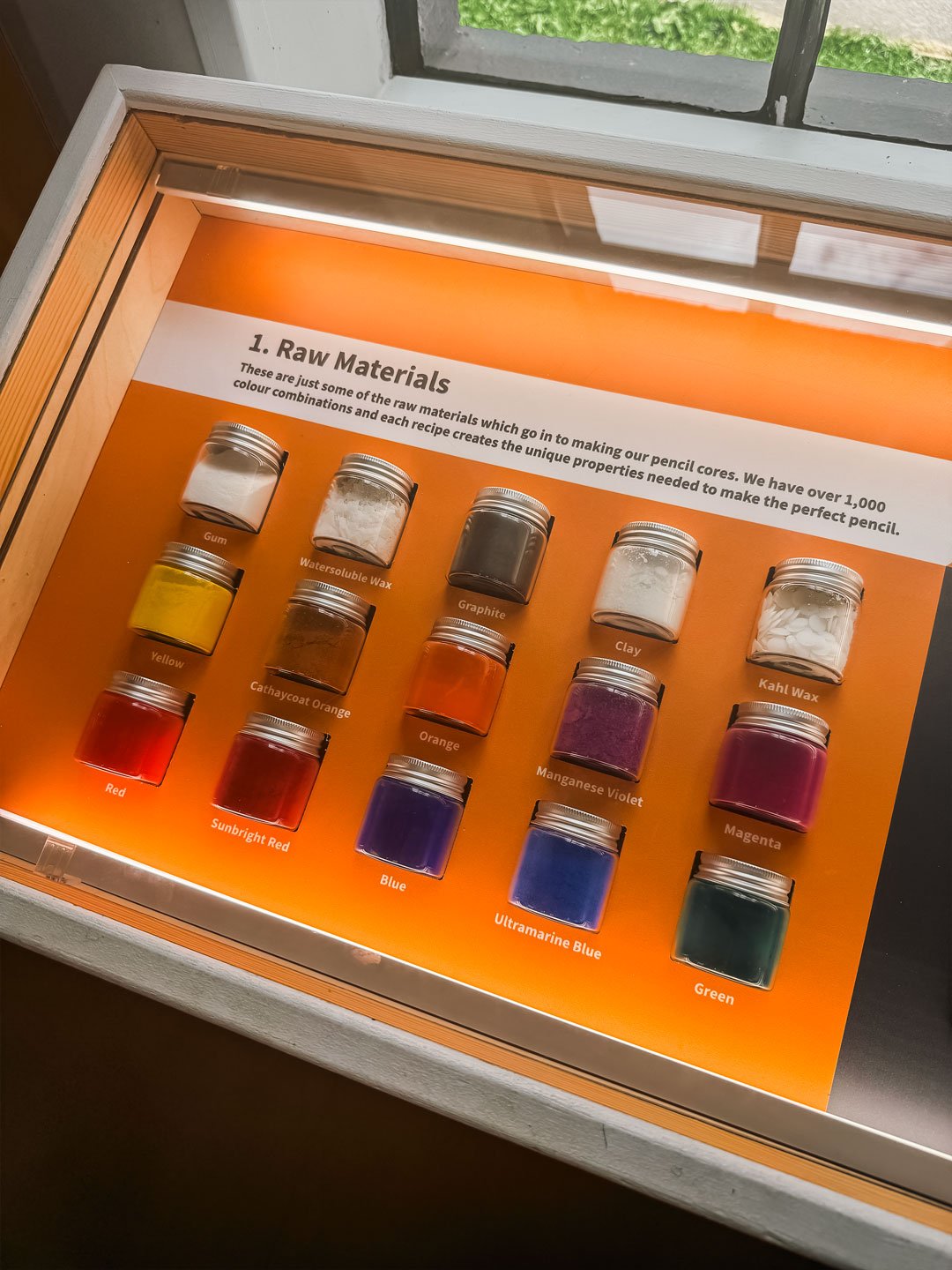
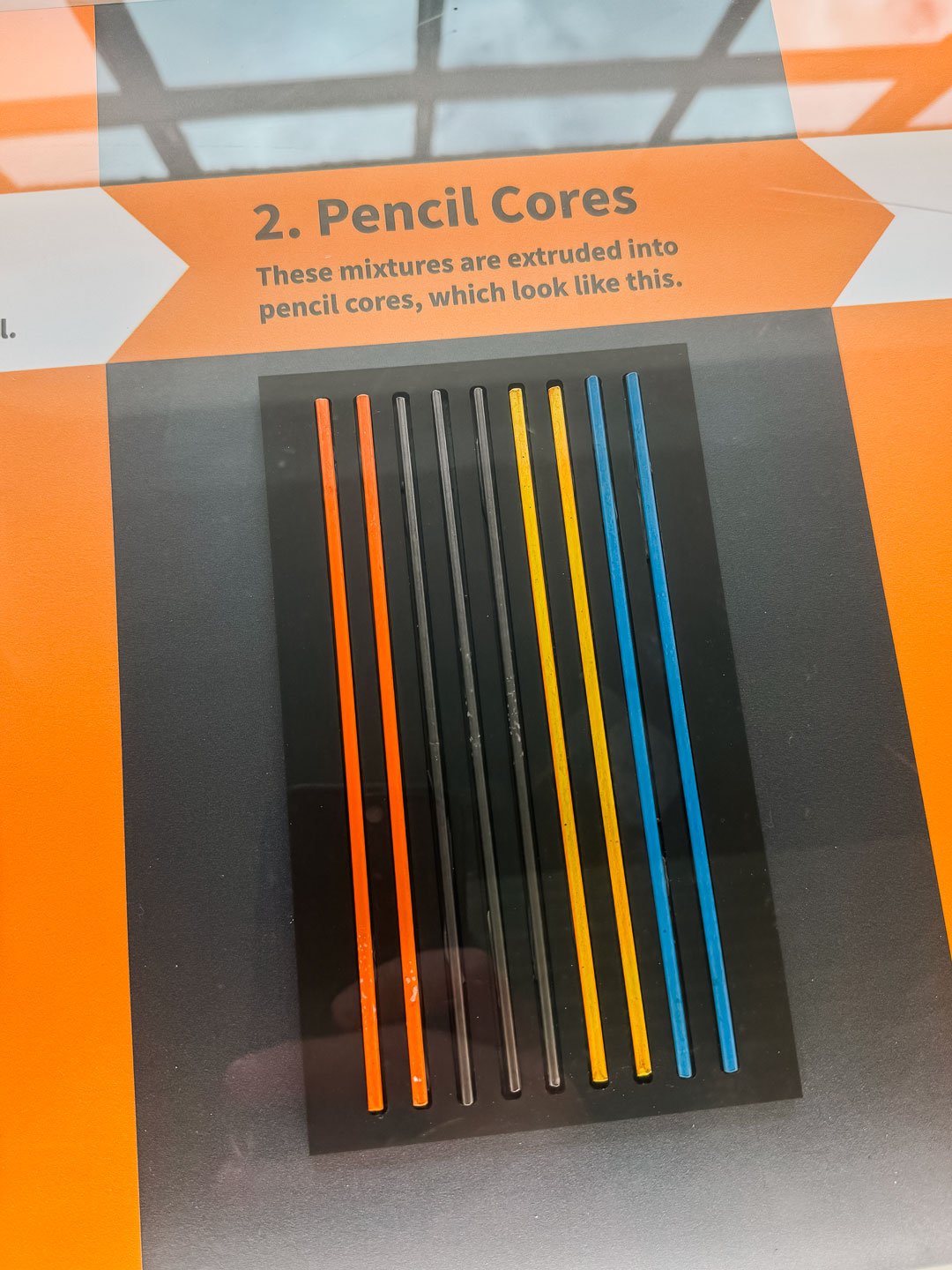
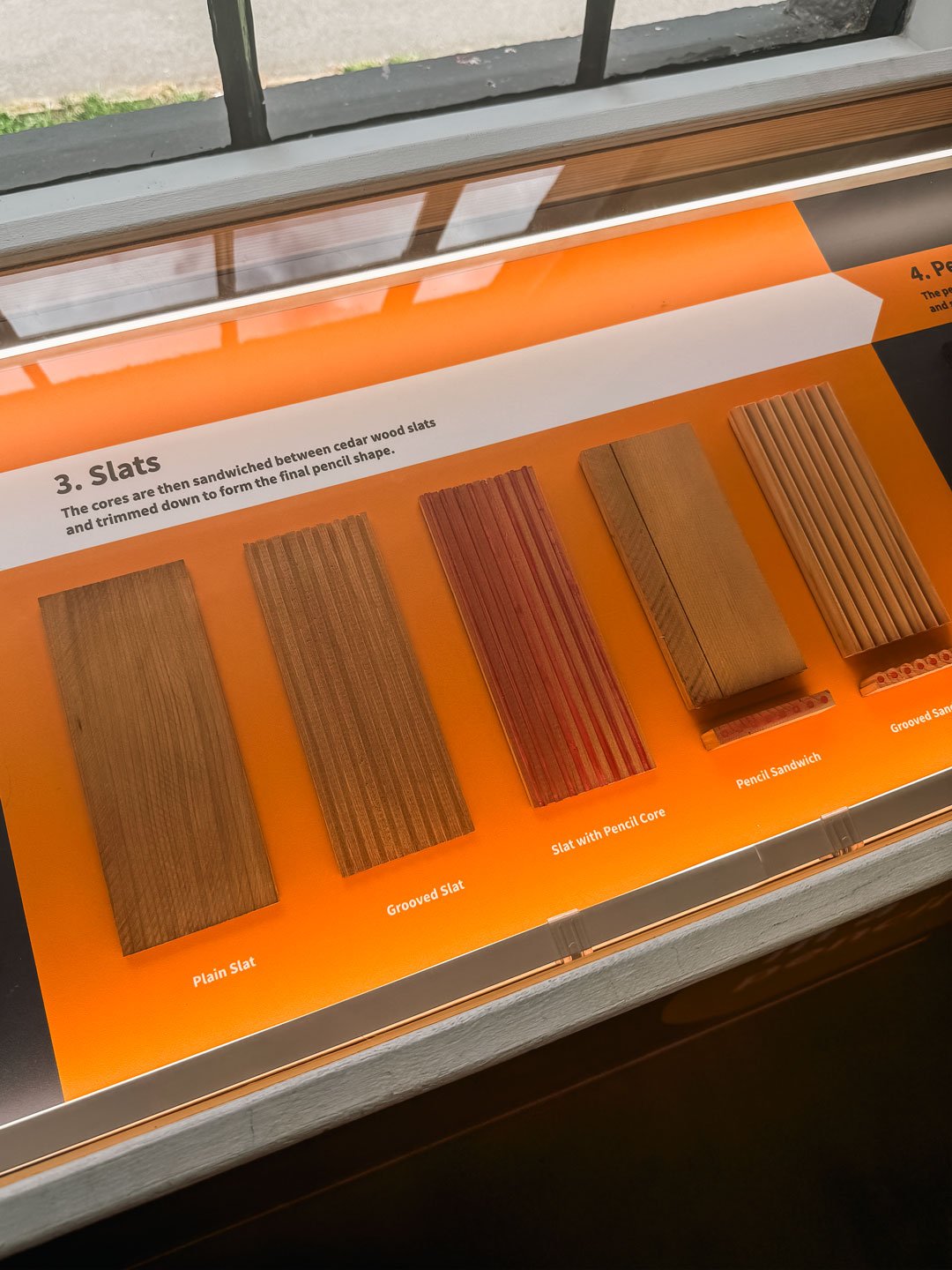

A Creative Haven
For art enthusiasts, the museum offers a real treat—the chance to see how pencils are made and to explore the incredible variety of Derwent pencils on display. From classic graphite pencils to vibrant watercolour and pastel pencils, it’s an artist’s dream come true. There are also interactive sections where you can test out different types of pencils and get a feel for the diverse textures and effects they can create. Whether you’re a seasoned artist or just someone who loves to doodle, this hands-on experience sparks the imagination and makes you want to grab a sketchbook and start drawing.
Beyond the fascinating history and impressive exhibits, the museum is a place that inspires creativity. The on-site shop is packed with beautiful Derwent products, from sketching sets to professional-grade pencils, making it impossible to leave empty-handed. And if you’re feeling particularly inspired, there’s a cozy area where visitors can sit down and create their own drawings. It’s a space that encourages you to embrace the joy of sketching and painting, no matter your skill level.
A Perfect Day Out in Keswick
Visiting the Derwent Pencil Museum is more than just a quirky stop—it’s a place that brings art, history, and creativity together in an engaging and inspiring way. Whether you’re an artist, a history buff, or simply someone looking for something a little different to do in the Lake District, this museum is a must-see. Plus, with Keswick’s stunning lakes and mountains right outside the door, it’s the perfect destination for a day filled with culture, nature, and inspiration.
If you ever find yourself in Keswick, don’t miss the opportunity to explore this delightful little museum. You’ll walk away with a new appreciation for the pencil—a simple tool that has sparked creativity for centuries.
Do Quality Art Materials Matter?
Paul Clay
Using the finest art materials from Faber-Castell, Winsor & Newton, and Derwent can significantly enhance both the process and outcome of your artwork. These brands are trusted by professionals for their high-quality, durable materials and superior performance across different media.
Faber-Castell
Faber-Castell is renowned for its precision-engineered pencils, offering a broad range of graphite, coloured, and Polychromos pencils that deliver rich pigments and smooth application. I’ve been using these pencils for a number of years and I have no complaints! (Maybe some more skin tone colours would be nice) Their pencils are known for being highly blendable and lightfast, ensuring my work remains vibrant and true to colour over time. The exceptional durability of their leads also prevents breaking, giving consistent, reliable results.
Winsor & Newton
Winsor & Newton is a gold standard for watercolours, offering both vivid, transparent pigments and excellent control over washes. It’s what I started using when I began painting and have always been impressed by the quality. Their paints are made from finely milled, premium pigments, ensuring a pure, luminous finish that can handle layers and delicate colour transitions effortlessly. Winsor & Newton also excels in offering a wide tonal range, allowing artists to achieve precise and subtle variations in their work.
Derwent
The Lightfast pencils are a relatively new addition to my collection and I like the choice of colours. I’m still getting used to how they perform but I think I’ll be purchasing more. Their pencils offer smooth layering and blending, making them perfect for intricate detail or bold, expressive strokes.
Derwent stands out for its versatility and range of innovative materials like their watercolour pencils, Inktense pencils, and pastel pencils. Derwent products combine ease of use with exceptional colour depth and flexibility, allowing artists to explore different textures and effects. They’re also formulated to resist fading, preserving the integrity of your artwork. I’m also a big fan of the Derwent Super Point Manual Helical Pencil Sharpener which I’ve used for several years, ensuring the sharpest points when I’m drawing.



